|
We're Trying a Grafting Experiment!
Ever heard of a "designer tomato"? At Bardwell Farm, we're all about pushing the boundaries and bringing you the best! That's why we're experimenting with tomato grafting. Here's the lowdown: grafting combines the rootstock (bottom) of one tomato plant with the scion (top) of another. This allows us to create plants with the best of both worlds! Why graft?
Think of it like creating your own super tomato! Johnny's Seeds to the Rescue! To get started, we sought advice from the experts at Johnny's Seeds. They helped us choose the perfect tomato varieties for grafting based on their complementary strengths. Building the Perfect Grafting Environment But grafting isn't magic! We had to create a special humidity chamber to maintain a constant 70°F temperature and complete darkness. This allows the graft union to heal properly and form a strong connection. Stay tuned! We'll keep you updated on this little experiment of ours and share the results. Will these "super tomatoes" live up to the hype? Only time will tell!
0 Comments
As many of you may know cover cropping is a major part of soil health. It builds organic matter and creates food for the microbes, earthworms, and other living organisms in the soil. Season 2018 sure took a tole on both farmers and the farmland on which they grow on. We shared how difficult last season was with you but never really talked much about the late season monsoons and what it did to the farmland here in the Pioneer Valley. The picture below might be hard to see, but I was driving the other day and saw a brown wind storm in the distance and wanted to stop and grab a quick photo to illustrate. Due to the excessive rain and the over saturated fields late in the season many farmers had to abandon the use of cover cropping because it was just too wet to get into the fields without creating more damage. Fields were either left bare, or if lucky, the remnants of the crop remained.
Soil is most happy when it has something living on it. It keeps the soil fed and healthy throughout the winter months, but it was too difficult to seed down fields or even germinate seed before it just rotted away from too much moisture. This led to bare fields over the winter months. When we didn't have any snow cover, on windy days you could see top soil blowing away because there was nothing to hold it in place. Or the opposite, where there was too much snow melt or excessive rain made erosion a big issue. It basically washed away the top soil. Farms have to start getting creative in years such as these. It's a tough battle. In some cases there's not much that can be done. We have to take care of our land just as much as we take care of ourselves. If the soil we grow our food on isn't healthy it will not perform well. Farmers constantly have to find the balance between profit and environmental sustainability. The take home message here is that we are at the mercy of mother nature, but we have to try our hardest to make sure we are implementing the best agricultural practices as we can. What is a germination chamber? It's basically a miniature climate controlled greenhouse. Its job is to germinate seeds. We use a crockpot filled with water to generate heat and humidity. This gives us uniform germination over the trays and speeds up the time for most crops. This is because it is always at 80 degrees to create that perfect growing environment. The chamber does not need light because the seedlings are only looking for heat and moisture to start. It is very important though to make sure you pull the seedlings out as soon as they have popped through the soil. At this time, without light, they would die. This is the process of how we went about building this mini wonder...
The experiment worked! The chamber heated up just as planned. We seeded cucumber seeds in a tray and added them to the chamber. We had germination within 3 days! It really sped up the process along with creating a uniform germination across the trays. This is a great tool to use all season long because it will hold the desired temperature you need. For instance if it's 100 degrees in August and you're trying to germinate lettuce, you can place trays in the chamber and let them go. And, most likely, you'll have 100% germination every time. We'll keep you informed throughout the season as we use this new piece of equipment. Give it a try, we think you'll love it! Earlier this month I was asked by the Massachusetts Department of Agricultural Resources (MDAR) to join a panel of three farmers to help with a New Beginner Farmers Class they offer.
After a brief introduction by each student the panel shared what it was like to start, maintain, and generally own a farm still being beginning farmers ourselves. We talked with students about the struggles we face day to day, the hard work that goes into the operation and the positive aspects that make us wake up and go after it for another day! This was really exciting for me because I was able to share my story with people a little less than twice my age. I was able to inspire others and left that night feeling as I did good for others! As many of you know I love talking farming and it was right up my alley! The conversation was really engaging. There were so many great questions about how to financially and economically run an agricultural business, how to sell and advertise to a saturated market, how to balance personal relationships, and so many more. I was proud to share my passion and love of farming with all of them. I was sincere in saying farming is a lifestyle and an industry built on hope. That it is more about the ride than making a million dollars. To expect mistakes and work through them. To have an open mind and learn something new every day. If there were five things I would want the students to remember...
I want to thank MDAR and the students for this opportunity. Thank you for listening to my story. Knowing programs like this one exist brings hope and promise to our profession of farming! Last week I was welcomed by Smith Academy to participate in their Agricultural Career Day presented by the Szawlowski Farms Agricultural Foundation. This day was to educate and expose students to the importance of Agriculture and the local food movement in the Pioneer Valley. I sat amongst a group of ten panelists who are all involved in one of the many branches of agriculture. It focused on two very important aspects. One, how important local food is to our community and economy. Second, all of the people that are involved in making local food possible. Whether it's the farmer growing the food, the banker who provides a loan for farm equipment, the trucker who distributes food or a food bank that feeds people that are less fortunate, each and every one is important to agriculture. Bob Wagner represented the Agricultural Commission of Hatfield. Having a background with the political side of farming he shared how important it is to be involved with legislature, the bills being presented, and how it can effect the industry.
Lisa Limont and her colleague Amber Letourneau were representing the Food Bank of Western Mass. The Food Bank helps feed communities and people that cannot afford to purchase food. Lisa is a coordinator and helps source local foods to feed people. They work with local farmers during each season to source food that the farm cannot market. They also work with businesses to arrange donations of canned goods. Amber Letourneau is a nutritional specialist that works with people who lack the experience in how to cook healthy meals. She works directly with communities to provide a base foundation for people to properly cook nutritious food for their families. Gina Gallagher from Farm Credit East was there to share the financial role in agriculture. She explained that Farm Credit East works with farmers to develop profitable business plans, marketing tactics and loans to help agricultural businesses succeed. Carl Loomis, from Swazlowski Farm, represented a trucker who has the important roll of moving produce and goods across the country to supply the needs of the food industry. Big Y Produce Sales Manager Sean Stolarki works with local farms in the area to source local foods to stock the chain of stores and feed the communities around them. He does his best to bring in local foods being produced in the valley to give their customers the same feel and quality of what it means to be "local". George Semanie from C&S Wholesale in Hatfield's job is similar to Seans where he is the manager dealing with the buying and selling of products coming into their facility. He helps supply local grocery stores all throughout the Pioneer Valley to meet high demands within the industry. Kevin Rodak from Helena Chemical in Hatfield is a sales representative that deals with farmers to help better their growing operations and create a more profitable crop. He works closely with farmers to help with control of weeds, insect and disease pressure, as well as help feed crops being grown. Melanie and Diane were there representing Swazlowski Farm and everything that goes into bringing an agricultural product to market. From farming the fields to marketing a product, to distribution and performing important office tasks, it's no wonder they sell two hundred million servings of potatoes each year! I represented the farmer. I talked about the process of growing food, the steps of planting and maintaining a crop, and how we market and sell our produce to the community. It was exciting to be able to see the students react to agricultural related topics and see their interest! I want to thank the Swazlowski Farms Agricultural Foundation for inviting me to speak, to share my passion and why I think agriculture is so important to our community. I would also like to thank Smith Academy for hosting this event and giving students the opportunity to listen to all of the good things agriculture has to offer! Lastly, thank you to the Food Bank of Western Massachusetts for the certificate presented to me. I'm honored to serve our community. From the UMass Extension: November 15, 2018 CROP CONDITIONS High tunnels have been planted and greens are up, while in the field, roots are being dug. Fields are being put to bed and equipment stored away ahead of today’s predicted snow. November is a time when we can look back and reflect upon the growing season, so we chose to share a reflection from one of you. We heard from many of you that this year was the most challenging yet because of the weather. Why? Here is a synopsis from farmer Harrison Bardwell in Hatfield, MA.
It's nearing the bittersweet end of the growing season here at Bardwell Farm. We are cleaning up the rest of the winter squash out of the fields before the frost, taking up plastic, and putting all of the fields to bed. Seems like a normal routine right? You would think so, but area farmers behind the scenes have been having one heck of a time this year. We want to take some time in this blog to reflect, not negatively, but more to explain some of the difficulties of being at the mercy of Mother Nature during Season 2018. Early spring was cold and we were excited to get planting. Temperatures were below average across much of the state which made warming soil temps difficult. In between very cool days and the warmer days, we managed to get the first transplants in the ground. Cabbage and chard settings sat in the soil for almost a month with minimal growth. This led to a lot of dampening-off (seedling death) and cabbage root maggot desiccation. A root maggot is an insect that eats the roots of crops such as cabbage, radish, and broccoli. Below is a picture of the first setting of cabbage I'm talking about. We got through the cold spell and were blessed with average rainfall through the early weeks of May, this helped us plant all of the main season crops. We even had to irrigate here and there because there wasn't enough rain. Local farmers were saying it was almost drought conditions by this time. Below you can see me irrigating scallions. May is the month for planting and we sure nailed that! Conditions were really good through most of June, then on June 19th is when things turned for the worse. June 28th started these crazy rain spells, getting 3.5" of rain in one day! Luckily crops were still in their smaller stage so not much damage was done. If you think about it though that's almost enough rain for a month in just one day! There are a few pictures below that demonstrate how the rain can effect crops in just one storm. Through the rest of July and August we dealt with constant above average temperatures and excessive rain, it really took a tole on both the farm crew and crops. We had average temps in the mid 90's with high humidity, which made work very difficult to keep up with the crops, weeds, and daily life on the farm. Crops grew so fast that sweet corn settings were coming in on top of each other. Vine crops such as winter squash and pumpkins matured in the first weeks of August! Winter squash and pumpkins are supposed to mature by mid September, but the hot humid weather we had pushed things along too quickly. These crops love the heat! Sometimes too much which can change harvest dates for crops that are more of a cool seasonal crop. Heat and humidity, coupled with the excessive rain, took a major tole. Crops just rotted in the soil they were planted in because of the amount of moisture in the ground and in the air. Many crops were lost and we experienced a major decrease in crop yields. The bottom line, too much rain! This season was also a struggle with pests, soil borne diseases, and weed control. The insect pressure has been incredible this year because of flea beetles, an insect that munches on cabbage and other crops love the heat. The excessive rot, rain, and humid conditions made the population of fruit flies explode both in storage and in field with crops such as tomatoes, fruits, and basically anything that had potential to rot because of the weather. Soil borne disease like Phytophthora Capsici which attacks crops such as peppers, eggplant, tomatoes, winter, summer squash, and pumpkins is a killer in the wet seasons. Most fields in the Pioneer valley are infested with this disease which is nearly impossible to get rid of. This is a fungal disease that is only active in saturated soil (moves in water) and can persist dormant in soils for up to 7 years. This disease can travel on equipment or your shoe from field to field. It infects crops by attacking the roots and slowly cutting the water and food source to the plants. This disease wiped out many of of our winter squash, peppers and tomatoes decreasing our yields. Lastly, weeds have been a struggle to control this year. So much rain has made cultivating and other weed control tactics difficult to maintain because of the mere fact of not being able to physically enter the fields. The result was a lot of weeding and coping with reduced yields... basically, we couldn't keep up with the amount of weed germination and growth because of the rain and heat. Quick fact, most weeds love the heat and don't mind the rain because they are acclimated to this area. No one ever said farming would be easy, but this year sure pushed many of the farmers in the valley to their limits. There was much learned this season, much lost and gained at the same time. To me, a season like this one made farming real.
There are major downfalls in choosing a career and life like this one, but we cannot let this stop us. We have to push through the difficulties and harvest the crops that grew the best for us. It was a great season to see which varieties held up better than others under these extreme conditions, which ones were resistant to certain diseases and weather conditions, and ones that failed miserably. We look at the 2018 season as an experience, not a loss. We hope this sheds some light on the season and the life of local farmers. From all of us here at Bardwell Farm thank you for your support!
We were interview by CISA (Community Involved in Sustaining Agriculture) recently for their new video series "Breaking Ground: Beginning Farmer Stories", highlighting young people in farming. Have a look!
Many thanks to the CISA crew for the opportunity and featuring our humble little farm, outstanding job! In the spring of last year we were contacted by UMass student Isabel Brofsky to participate in a bird and vegetation study. We were excited and jumped at the opportunity and invited Isabel to our farm. After several visits and rounds of study she presented us with her analysis and it was pretty amazing! We were surprised at the diversity of birds our little farm hosted. Have a look at the report it's an invaluable insight for us farmers and interesting information that we don’t typically think of. A big thank you to Isabel and her team for including us in her important work! Bird & Vegetation Study: Bardwell Farm Isabel Brofsky, MS Student Department of Environmental Conservation, University of Massachusetts Amherst This American Robin became a familiar sight as the season went on. I was able to recognize it individually because of the unique white patches on its wings, caused by a genetic mutation known as leucism. Field Season Review The purpose of this field season was to collect data on the abundance and species diversity of birds and quantify their habitats. I completed three rounds of bird surveys over the course of the summer, each time performing 10-minute standardized point counts of all birds within a 50-meter radius. During each point count I recorded the number and species of birds I observed, as well as which habitats they were occupying and any feeding or breeding behaviors they were exhibiting. I also conducted two rounds of habitat surveys, which I completed by dividing the area of the 50-meter radius point count circle into distinct land cover types (i.e.orchard, cover crop, woodland, etc.) and measuring the height and density of the vegetation and identifying the plants present throughout each land cover type. I began these surveys in around late May and finished in mid-July to coincide with the breeding season of most species in this region. Highlights of the Field Season Not only was Bardwell Farm one of the smallest farms I surveyed over the course of the summer, it also was located in one of the most developed or suburban areas that I visited. Because of these two points, I did not anticipate Bardwell having a very long species list. I was, however, proved totally wrong. With a list of 40 bird species and a total of 225 individuals, Bardwell was a remarkably diverse and unique farm that surpassed my expectations. Due to Bardwell’s more suburban surroundings, I observed a number of species that are uniquely adapted to human-altered habitats. Chimney Swifts were a common aerial visitor, as well as Rock Pigeon and Eastern Kingbird. On my very first visit to the farm, I observed a pair of Redtailed Hawks perched and calling from the top of one of the trees on the edge of the farm. Although I didn’t see them on any subsequent visits, I wouldn’t be surprised if they nested somewhere nearby. The only Canada Geese I saw at any farm all season long were in the grassy fields adjacent to the farm. Eastern Kingbird While many of the birds I recorded on and around the farm were suburban species, I also observed a diverse array of woodland and shrubland birds as well. The forested areas at the edge of the farm produced species such as Warbling Vireo, American Redstart, and Yellow Warbler. The big hickory tree near the main field was a magnet for songbirds. The list of species that I observed in that single tree includes Baltimore Oriole, Rose-breasted Grosbeak, Northern Cardinal, Downy Woodpecker, and Song Sparrow. As I have started my data analysis, Song Sparrows have become more and more of interest to my research. A common but declining species in the Northeast, Song Sparrows were present on small farms like Bardwell in higher densities than any other natural and managed habitats in this region. They were also one of the most common species that I observed feeding in and around row crops, and because they feed primarily on insects during the breeding season, it is possible they are providing an ecosystem service in the form of insect pest control. Song Sparrow
What’s Next With a field season complete, my primary tasks were to enter all of my data into my computer and organize it so that it could be used in future data analyses. With that step finished, I have recently been working on some preliminary Song Sparrow analyses to determine the major habitat characteristics (vegetation height, density, cover of different habitat types, etc.) that are driving bird abundance and occurrence on these farms. I will also be preparing for a second field season this summer. Species List The following list includes all species observed or heard in and around the farm (not just those observed during 10-minute point counts) across the combined three visits. I have highlighted shrubland birds in green because many of these species are declining in this region due to habitat loss and their presence on these farms is of interest to my project. Another of my interests is the extent to which birds are feeding on farm pests, so I have also included a brief description of the diets of potentially beneficial species. Here I define a beneficial species as one whose diet during the breeding season is composed of over 50% animal and/or insect matter and whose feeding behavior would allow it to potentially feed on a farm pest.Bir Well the 2018 season sure caught up with us! If you recall, we were just finishing the doors, got the cover crop in, and waited for some growth until we planted the heirloom tomatoes. As you can see below the Bardwell Farm Crew prepared the high tunnel to plant rows of tomatoes. We started by tilling the soil and incorporating the essential amendments needed. Next, we measured out each row for the different tomato varieties. We only made five rows because these plants get massive. We planted each plant roughly 3' apart and 6' between rows to give adequate spacing. Lastly, we watered the plants heavily before and after they were planted and added a beneficial compost to get them moving along. We gave the tomatoes a few weeks to get use to their new growing habitat. This meant monitoring them for water, disease, and heat stress. The tunnel can get up in the 90's easily on a sunny day. After the plants were established we added drip irrigation to keep them from getting thirsty in an environment where it doesn't rain unless we let it. We also added a trellis system where we use twine in a "v" shape on poles that lay above the tomatoes, and stapled at the bottom of each plant. This supports the plants as they climb to the ceiling. Next, we clipped these fast growing plants to the twine so they would stay up-right and not hang to the ground. We used biodegradable tomato clips specially designed to hold the tomato stock and not suffocate them once they are big. We clipped the two main leaders to the two pieces of twine going up to the ceiling. They will continue to be clipped as the continue to grow. Plants are at a month of growth in the photos below. While the plants are growing up, up and away, we prune the suckers and branches that will take away from the growth of fruit and the structure of the plant. This is done every few weeks to keep the tunnel from looking like a jungle, increasing air flow and decreasing the chance for disease. After months of prep, constant monitoring and a few learning curves, we finally saw some beautiful fruit forming and turning color. From this point on it was harvest, harvest, harvest! From July through late October we were able to stock beautiful and tasty fruit at our farmstand sourced directly from our high tunnel. We harvested over 2500 pounds of heirloom tomatoes in a space of 2160 square feet and we are very satisfied with the results. Below is just some of the beautiful fruit we harvested! It all finally came to the end in October where it was just getting too cold for adequate protection in the tunnel, so it was time to remove these monstrous plants. We started by cutting the stems at the base and letting them dry/freeze with the weather for a few days to decrease the weight. Next, we removed the tomato clips and twine and let the plants fall to the ground. It was a sight to see as the sun set and the high tunnel was empty again. It signaled the next steps. Cover cropping, liming and letting it grow over the winter. Below you can see me rototilling the soil in preparation of adding the seed and amendments into the ground. The first season really was a success and we learned so much along the way. Stay tuned next year as we begin to build High Tunnel 2!
Thanks for reading :) |
AboutFollow Bardwell Farm and all of our adventures here! Archives
April 2024
Categories
All
Gift CardsGive the gift of a CSA farm share or farmstand goods with gift certificate from Bardwell Farm! NewsletterSubscribe to Harry's Farmstand Monthly newsletter! |
||||||
DIRECTIONS |
|
|
©2022 BARDWELL FARM, ALL RIGHTS RESERVED
|

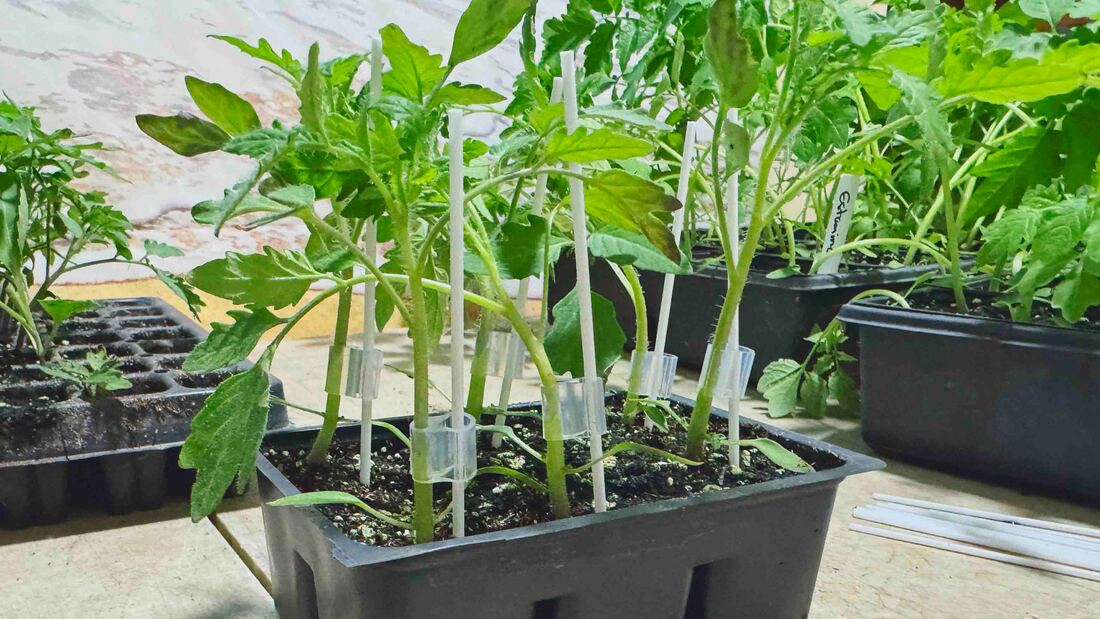

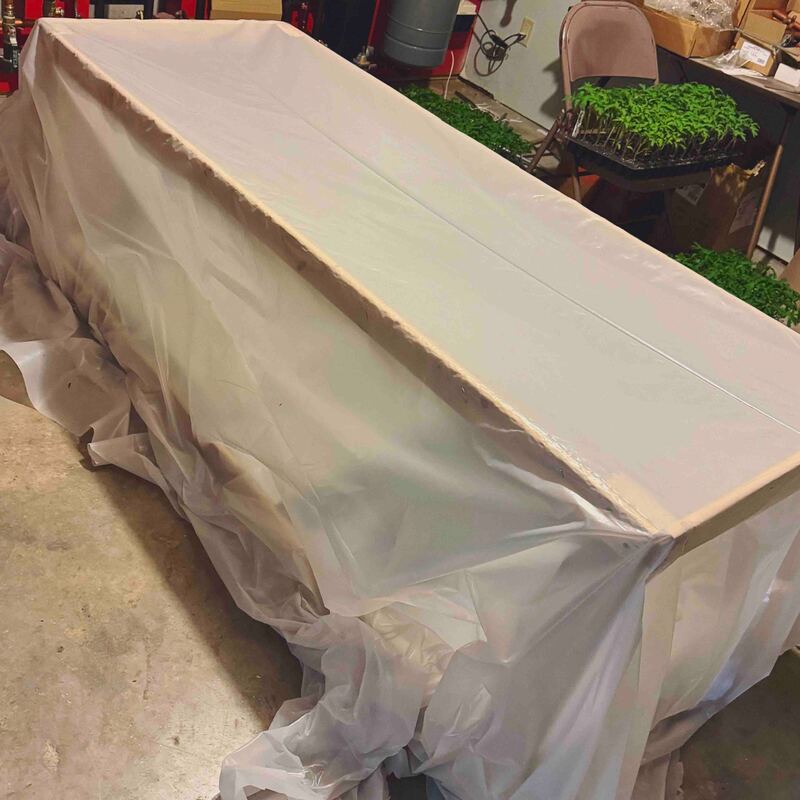








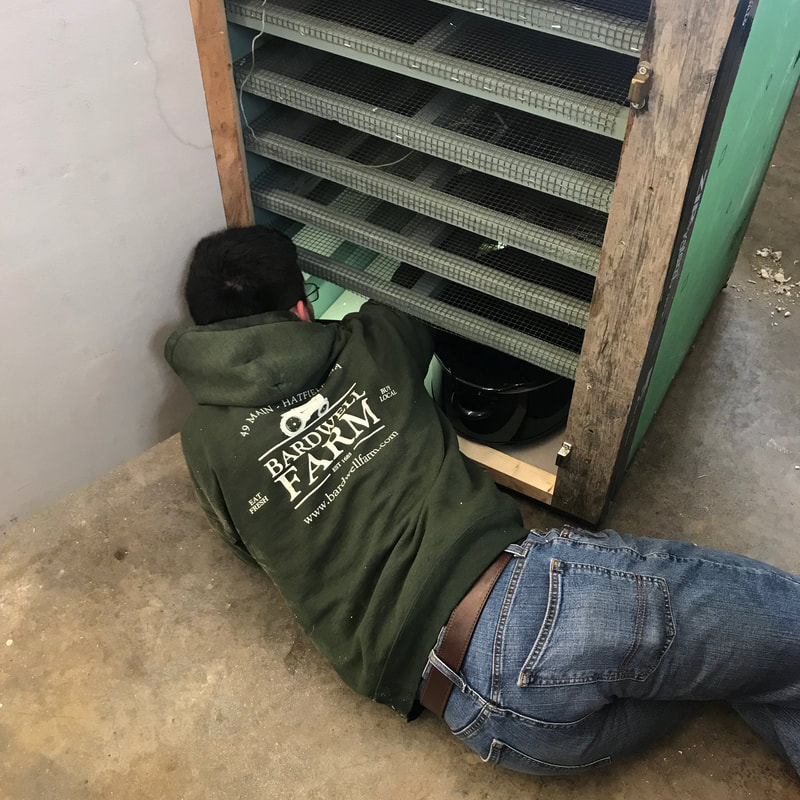

















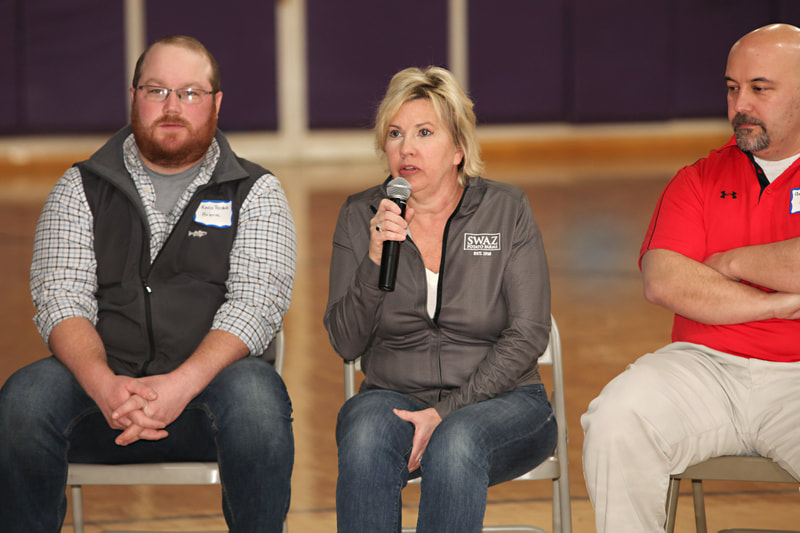
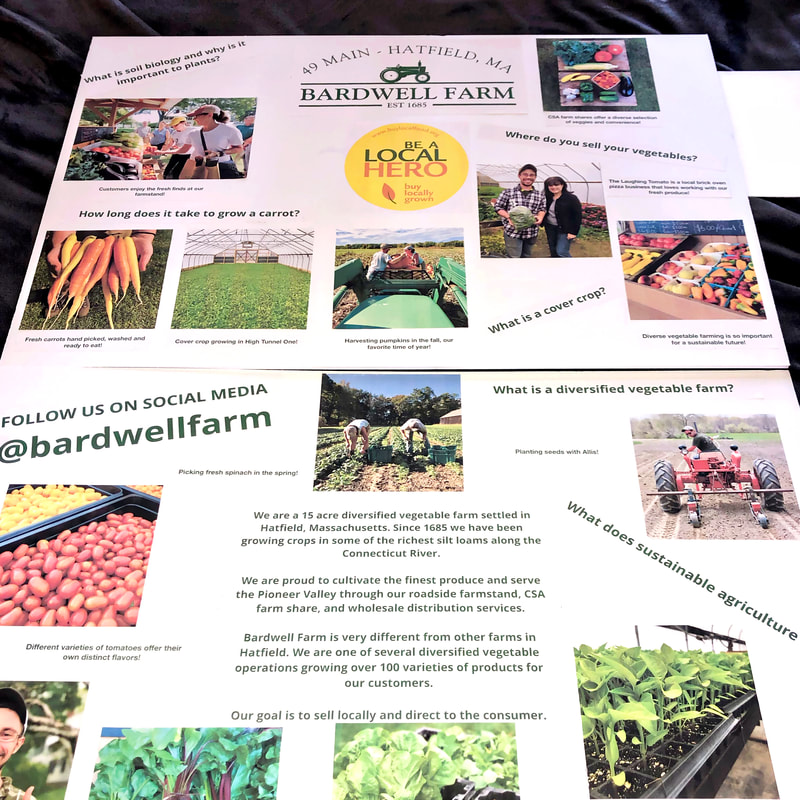















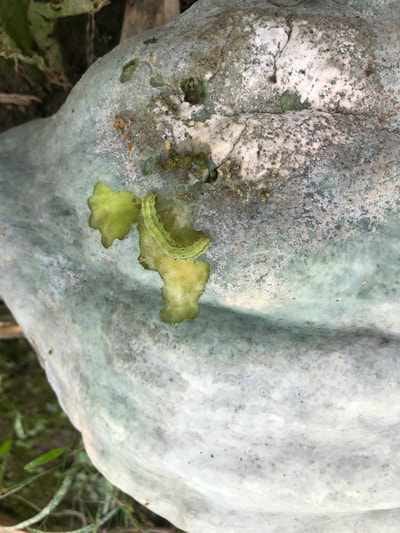




















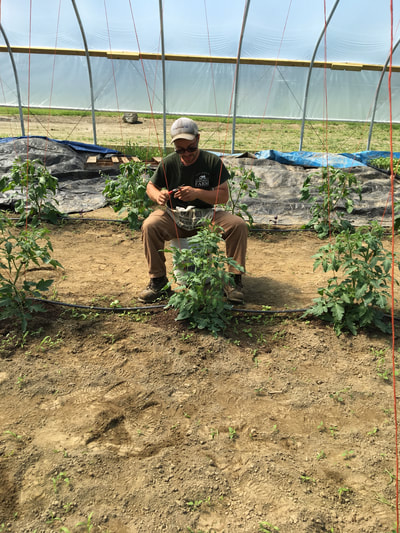

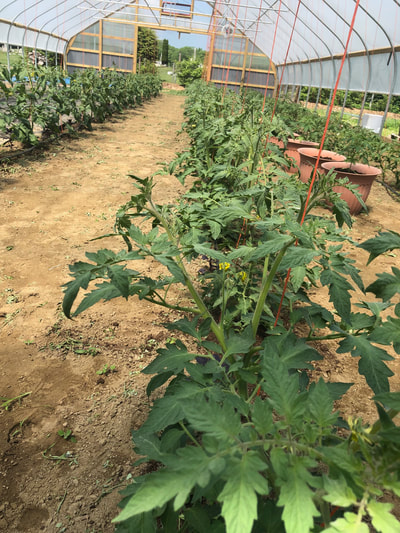
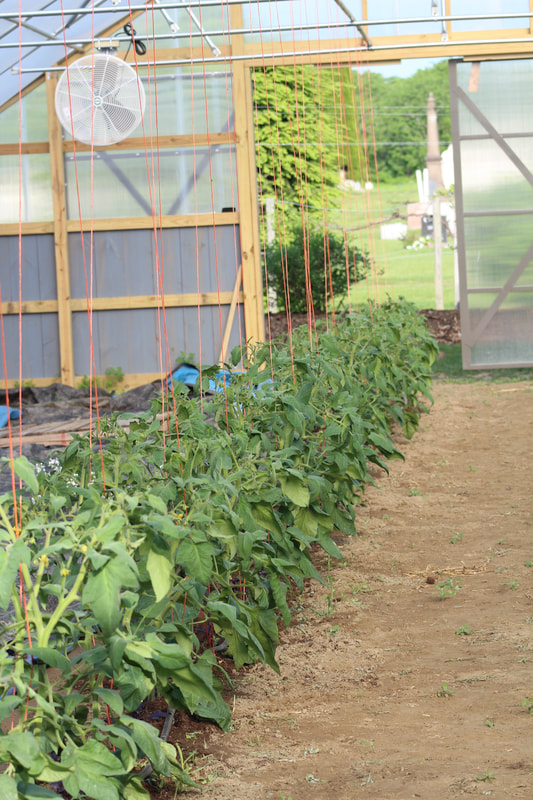



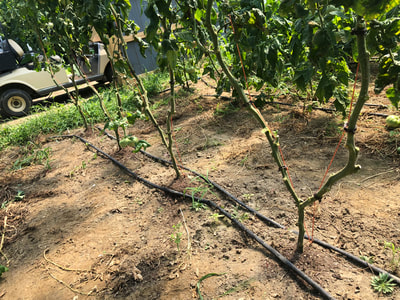



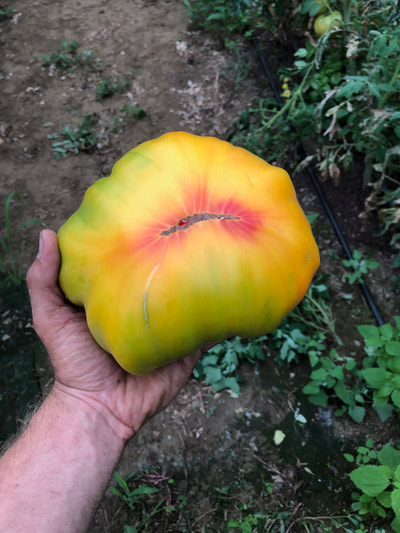





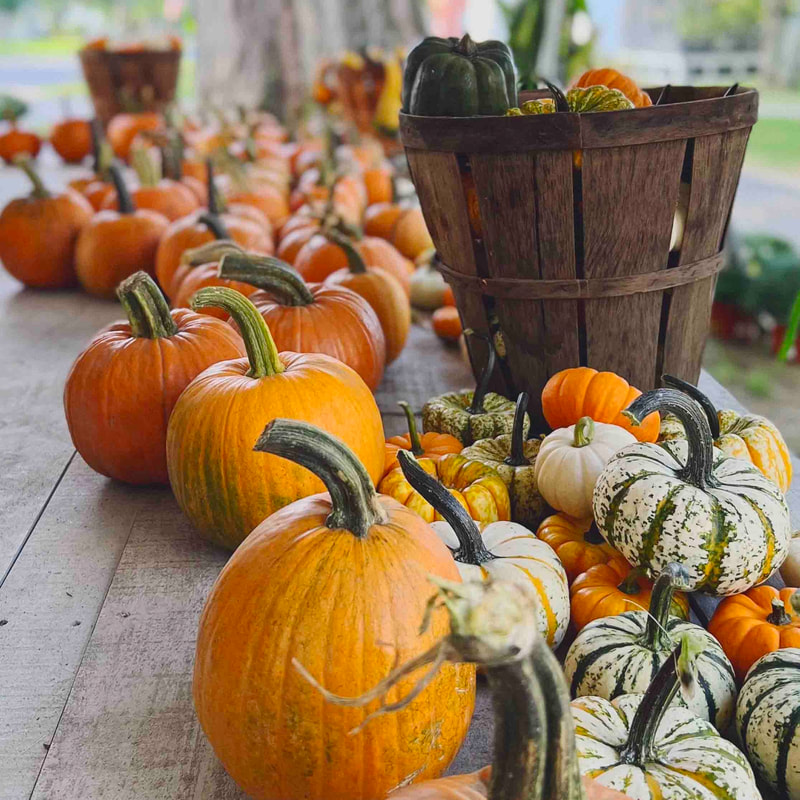



 RSS Feed
RSS Feed


